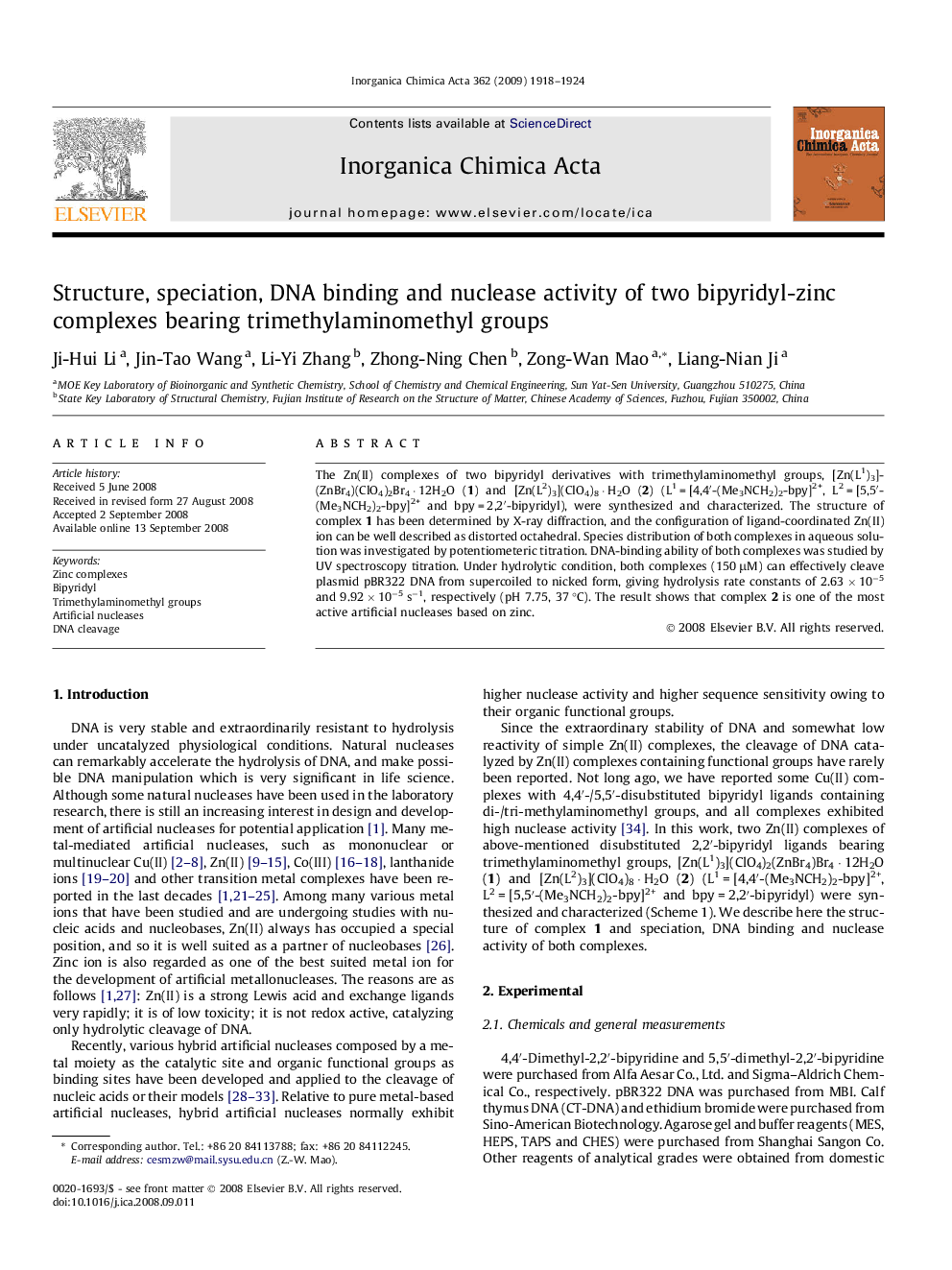| Article ID | Journal | Published Year | Pages | File Type |
|---|---|---|---|---|
| 1311400 | Inorganica Chimica Acta | 2009 | 7 Pages |
The Zn(II) complexes of two bipyridyl derivatives with trimethylaminomethyl groups, [Zn(L1)3](ZnBr4)(ClO4)2Br4 · 12H2O (1) and [Zn(L2)3](ClO4)8 · H2O (2) (L1 = [4,4′-(Me3NCH2)2-bpy]2+, L2 = [5,5′-(Me3NCH2)2-bpy]2+ and bpy = 2,2′-bipyridyl), were synthesized and characterized. The structure of complex 1 has been determined by X-ray diffraction, and the configuration of ligand-coordinated Zn(II) ion can be well described as distorted octahedral. Species distribution of both complexes in aqueous solution was investigated by potentiometeric titration. DNA-binding ability of both complexes was studied by UV spectroscopy titration. Under hydrolytic condition, both complexes (150 μM) can effectively cleave plasmid pBR322 DNA from supercoiled to nicked form, giving hydrolysis rate constants of 2.63 × 10−5 and 9.92 × 10−5 s−1, respectively (pH 7.75, 37 °C). The result shows that complex 2 is one of the most active artificial nucleases based on zinc.
Graphical abstractTwo zinc complexes of disubstituted bipyridine with trimethylaminomethyl groups were synthesized as artificial nucleases. Both complexes, especially the one with functional groups at 5,5′-positions exhibit very high nuclease activity.Figure optionsDownload full-size imageDownload as PowerPoint slide
